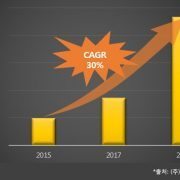2014 was the year preparing a platform to develop the OLED industry in full scale.
There was a prevalent doubt in the industry until 2014 concerning whether the OLED TV is able to break into the market or not. However, as LG Electronics successfully released the UHD OLED TV, the set manufactures were classified with the companies against LG and incapable of producing the OLED TV. Under this circumstance, the majority of TV set manufacturers including Samsung Electronics exhibited the Quantum dot (QD) BLU LCD TV at CES2015. The night view screen which was the exhibition concept only appeared on the OLED TV was employed on the QD LCD TV chasing the high contrast ratio just like the OLED TV.
In the display for a mobile device, the OLED succeeded in establishing an exclusive market with G Flex2 and Galaxy Note Edge with emphasis on the flexibility feature that LCD cannot even attempt to imitate.
According to the ‘’2015 OLED Display Annual Report’’ published by UBI Research on the 10th, the total revenue has decreased by 4% compared to the previous year due to the AMOLED panel shipments cut resulting from the low sales of Galaxy S5 in 2014.
Is the OLED industry already in crisis?
Though the OLED industry got wet with rain for a while in 2014, it will begin to solidify its place in 2015. Flexible OLED and TV are the alternatives.
UBI Research methodically analyzed and took a close look at the future of flexible OLED on the ‘’2015 OLED Display Annual Report’’. There are a number of display manufacturers developing products in view of that the rollable display is the final stage of a flexible display. But if the rollable display is to be applied on a mobile device, the cultural components are to go back to the analog age and in terms of technology, it may cause a heating problem as all parts excluding the display are concentrated on the body. For that reason, UBI Research prospected that the rollable product will be used on a large movable screen type display rather than on a mobile device.

Also the ‘’2015 OLED Display Annual Report” of UBI Research forecasts that the AMOLED panel market will grow at a CAGR of 30% reaching US$ 46 billion by 2020. Assuming the OLED panel for TV and tablet PC will take the sales share of 30% respectively in 2020, the report predicted that the key application for the OLED panel market will be a TV and a tablet PC following a smart phone.
The growth of AMOLED panel market is anticipated to accelerated after 2017 given that Chinese manufactures are also likely to invest in full scale between 2016 and 2017 to previse the Korea’s monopoly of AMOLED market.

<AMOLED Panel Market Prospect>









